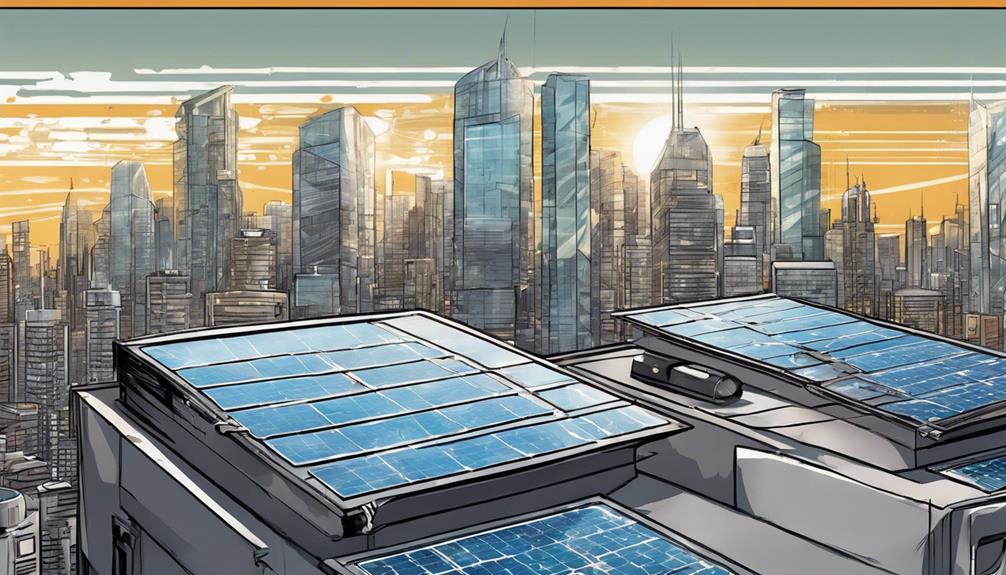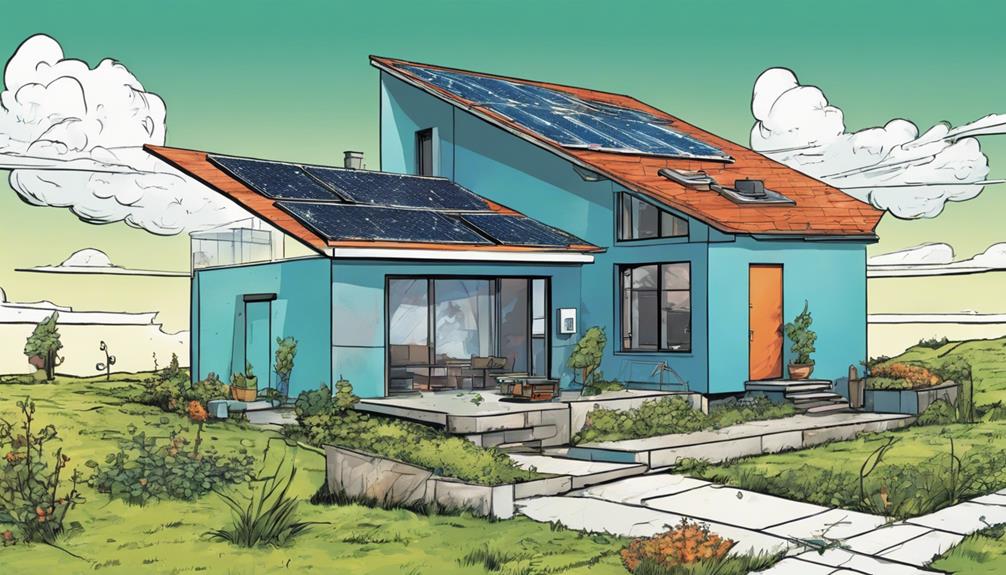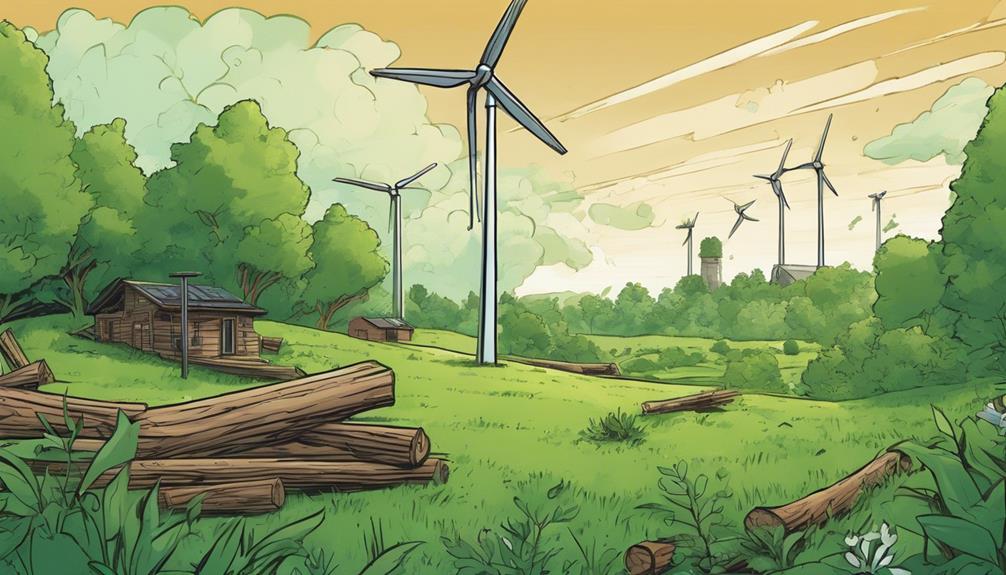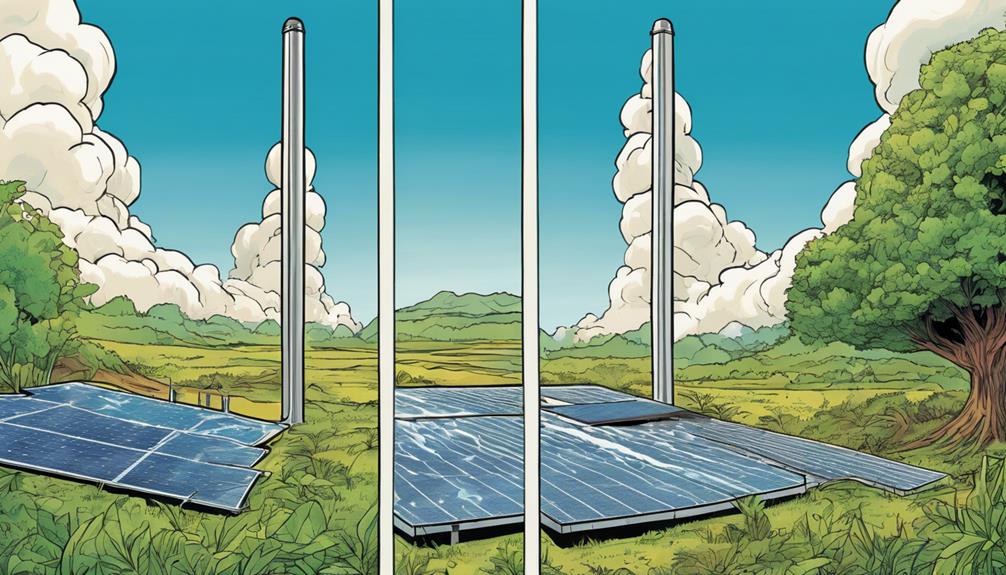As we explore ways to harness solar energy, we're faced with an important decision: passive or active systems? We've got the lowdown. Passive solar energy uses natural sunlight and heat, reducing artificial heating needs through strategic window placement, insulation, and thermal mass materials. Active systems, on the other hand, convert sunlight into electricity or heat using solar panels. While passive systems are cost-effective and require minimal effort, active systems need more installation and maintenance. But what's the best fit for our energy needs? Let's delve into the key differences and benefits to make an informed choice that's suitable for us.
Key Takeaways
- Passive solar energy systems utilize natural sunlight and heat to reduce artificial heating needs, relying on strategic design and materials.
- Active solar energy systems convert sunlight into electricity or heat using solar panels, requiring more installation and maintenance effort.
- Passive systems directly heat air or water within a building, offering a cost-effective and sustainable solution with minimal effort.
- Active systems can store excess energy for later use and connect to the grid, but need extensive setup and periodic upkeep.
- Understanding the differences between passive and active systems helps make informed decisions based on energy needs, goals, and budget considerations.
Understanding Passive Solar Energy

As we explore the world of solar energy, we're drawn to passive solar energy, a clever approach that harnesses the sun's power without relying on mechanical or electrical devices.
By designing buildings to maximize natural sunlight and heat, we can utilize the sun's position to warm our spaces and reduce artificial heating needs. Strategic placement of windows, insulation, and thermal mass materials is key to passive solar energy.
This approach directly heats air or water within a building, providing a sustainable solution for minimizing energy consumption and environmental impact. With minimal installation and maintenance required, passive solar energy is a cost-effective way to reduce our reliance on non-renewable energy sources and create a more comfortable living space.
Active Solar Energy Systems

We now turn to active solar energy systems, which take a more hands-on approach to harnessing the sun's power, relying on solar panels and other mechanical devices to convert sunlight into usable energy. Unlike passive systems, active systems use technology to collect and convert sunlight into electricity or heat. This allows for greater control and flexibility in energy production.
| Feature | Active Solar Energy Systems |
|---|---|
| Energy Conversion | Convert sunlight into electricity or heat using solar panels |
| Installation | Typically roof-mounted for ideal sunlight exposure |
| Energy Storage | Battery storage system stores excess energy for later use |
Active systems can be connected to the grid, allowing us to sell excess energy and contribute to a cleaner, more sustainable future. While they require more installation and maintenance effort, active solar energy systems offer a high degree of control and flexibility in energy production.
Key Differences Explained

Let's dive into the key differences between passive and active solar energy systems, which ultimately come down to how they harness and convert the sun's power.
Passive systems rely on natural heat and light, using design and materials to maximize the sun's energy without mechanical devices.
On the other hand, active systems use solar panels, pumps, and fans to collect and convert sunlight into usable energy.
This fundamental difference affects installation and maintenance needs, with passive systems requiring minimal effort and active systems needing extensive setup and periodic upkeep.
Understanding these disparities is essential for homeowners and businesses to make informed decisions about which solar energy approach best fits their needs and goals.
Benefits of Passive Systems

By opting for passive solar energy, we can greatly lower our energy costs and reduce our environmental impact, making it a sustainable solution for minimizing energy consumption and environmental footprint.
With passive systems, we can increase energy efficiency and reduce our reliance on artificial heating and cooling. This, in turn, leads to improved comfort levels within our homes and buildings.
By incorporating strategic window placement, insulation, and thermal mass materials, we can create a cozy and sustainable living space.
The best part? Passive systems are cost-effective, offering long-term savings despite the initial investment.
Choosing the Right Option

One important consideration when deciding between passive and active solar energy systems is our specific energy needs and goals. We need to assess how much energy we want to generate and how we plan to use it.
If we're looking to reduce our energy bills and rely less on artificial heating, passive solar energy might be the way to go. On the other hand, if we want more control over our energy production and the ability to store excess energy for later use, active solar energy systems are a better fit.
We should also consider our budget, as passive systems tend to be more cost-effective upfront, while active systems offer more flexibility in the long run. By weighing these factors, we can choose the right option for our unique situation.
Frequently Asked Questions
Can Passive Solar Energy Systems Be Used in Existing Buildings?
"We can definitely retrofit existing buildings with passive solar energy systems by strategically adding insulation, windows, and thermal mass materials to maximize natural heat and light, reducing our energy costs and carbon footprint."
How Long Do Active Solar Energy Systems Typically Last?
"We're not exactly solar experts, but we've got the scoop: active solar energy systems typically last around 25-30 years, with some panels lasting up to 40 years – impressive, right?"
Are There Any Government Incentives for Passive Solar Energy Installations?
We're happy to report that yes, there are government incentives for passive solar energy installations, such as tax credits and rebates, which can help offset the initial investment costs and make it more affordable.
Can Active Solar Energy Systems Power Entire Neighborhoods?
"We're exploring if active solar energy systems can power entire neighborhoods. While it's possible, it would require a massive installation of solar panels and a robust energy storage system to meet the high demand."
Are Passive Solar Energy Systems Suitable for Cloudy or Cold Climates?
"We're not talking about a few clouds, we're talking perpetual gloom But, surprisingly, passive solar energy systems can still thrive in cloudy or cold climates with strategic design and material choices."
Which Type of Solar Energy System is Better Equipped to Overcome the Challenges Ahead?
When considering solar energy challenges and solutions, it becomes evident that grid-tied solar energy systems are better equipped to overcome the challenges ahead. These systems allow for energy storage and backup power, enabling a reliable and efficient energy supply even during unpredictable weather conditions or power outages.
Conclusion
As we wrap up our solar energy showdown, it's clear that both passive and active systems have their perks. But here's a stat that really caught our attention: did you know that if just 1% of the world's deserts were covered in solar panels, we could generate enough energy to power the entire planet?
Mind blown, right? With this knowledge, we're more determined than ever to harness the power of the sun and reduce our reliance on fossil fuels.









